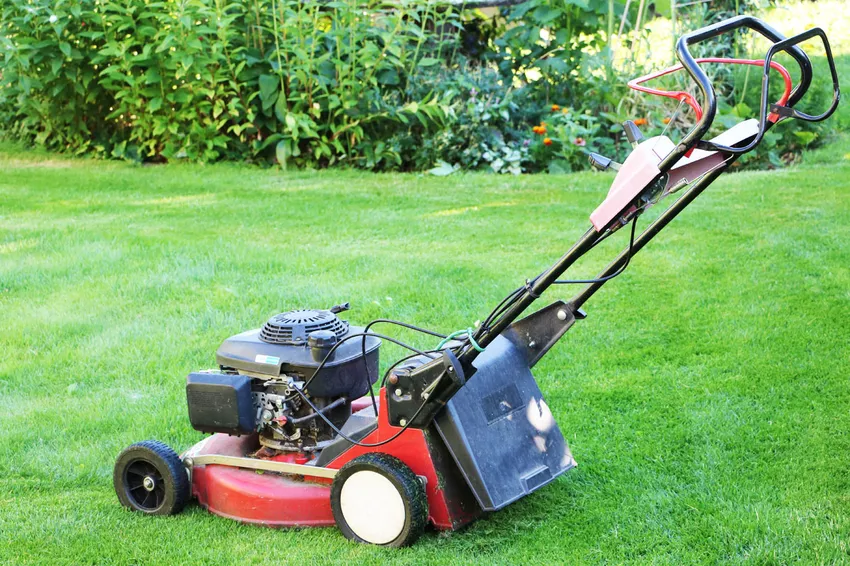- Leave clippings?
- requirements
- Ideal mowing rhythm
- Unsuitable: compacted soils
- frequently asked Questions

Is it wise to leave lawn clippings lying around? Many gardeners ask themselves this question when caring for their green spaces. You will find the most important information on the subject explained in detail in this guide.
In a nutshell
- It is possible to leave grass clippings lying around
- ensures a good supply of nutrients
- only leave when dry
- mow often to keep stalks short
- not recommended for compacted soils
Leave clippings?
If you're concerned about leaving the grass clippings after mowing, you can try it. The clippings are an ideal source of nutrients with a long-lasting effect, as the blades of grass slowly decompose and release valuable plant nutrients into the soil. This method involves a form of mulching that is used immediately after mowing. Another advantage of lawn mulch is the oxygen supply. Since you can only leave the lawn under certain conditions, the oxygen absorption of the lawn is not hindered. The floor even improves over time.

Notice: If you live in a rainy region, you should preferably remove the clippings. If your lawns remain permanently damp, lawn clippings that are left lying around are a major disadvantage.
requirements
If the necessary requirements for mulching with lawn clippings are not met, a variety of problems can arise. The biggest problem is clumping from too much moisture. Clumped lawn clippings decompose much more slowly and can even rot, which can lead to diseases in the affected area. This also reduces nutrient release. In combination with the poorer oxygen intake, the lawn suffers from the lawn mulch and should therefore be raked off as soon as possible.
To prevent this from happening, you should take a look at the following points that will help you with lawn mulching:
- take advantage of sunny weather
- don't mow after rain
- only leave dry grass clippings
- mow frequently
- Remove weeds beforehand
- Rake off inflorescences

If you stick to these guidelines, you can safely leave lawn clippings lying around.
Ideal mowing rhythm
In addition to the requirements already mentioned, you must ensure the correct mowing rhythm in order to keep the stalks sufficiently short. In this case, mowing every two to three weeks is not enough. Otherwise, the stalks will be much too long and harder, which means they will lie longer and not decompose. This in turn reduces the oxygen supply to the soil and increases the risk of moss formation. To get the right length, you should mow once a week. This will cut the stalks at a maximum height of 20 millimeters, which is ideal for the project. Of course, it's always shorter.

Notice: Regular mowing results in a finer lawn clippings, which facilitates rotting.
Unsuitable: compacted soils
There is one exception, however, when it comes to leaving the grass clippings where they are. If the soil in your garden is compacted, you should definitely avoid this measure. The lawn clippings cannot rot quickly enough and, in the long run, lead to increased formation of lawn thatch. To fix this problem, you need to improve the soil beforehand and sow the lawn again. A compacted lawn is particularly easy to recognize by its loamy soil and frequent formation of puddles.
frequently asked Questions
What are mulching mowers?Mulching mowers are recommended if you mow your lawn irregularly or less frequently. The device not only cuts off the blades of grass, it also shreds them. The grass clippings can therefore stay where they are, even if they are longer stalks.
Why shouldn't the lawn be walked on before mowing?The lawn should be as flat as possible so that you can leave the green waste lying around. If you step on the lawn before mowing, bumps will appear due to the blades of grass being pushed down. They can no longer stand up quickly enough, which means that the corresponding areas in the lawn are not mowed optimally.
Can lawn clippings be composted?Yes, that's no problem at all. If you want to compost the lawn clippings, they have to dry out a bit first. The greenery is then spread on the compost in layers eight to ten centimeters high. Between each layer, spread dry materials to keep the compost from rotting.